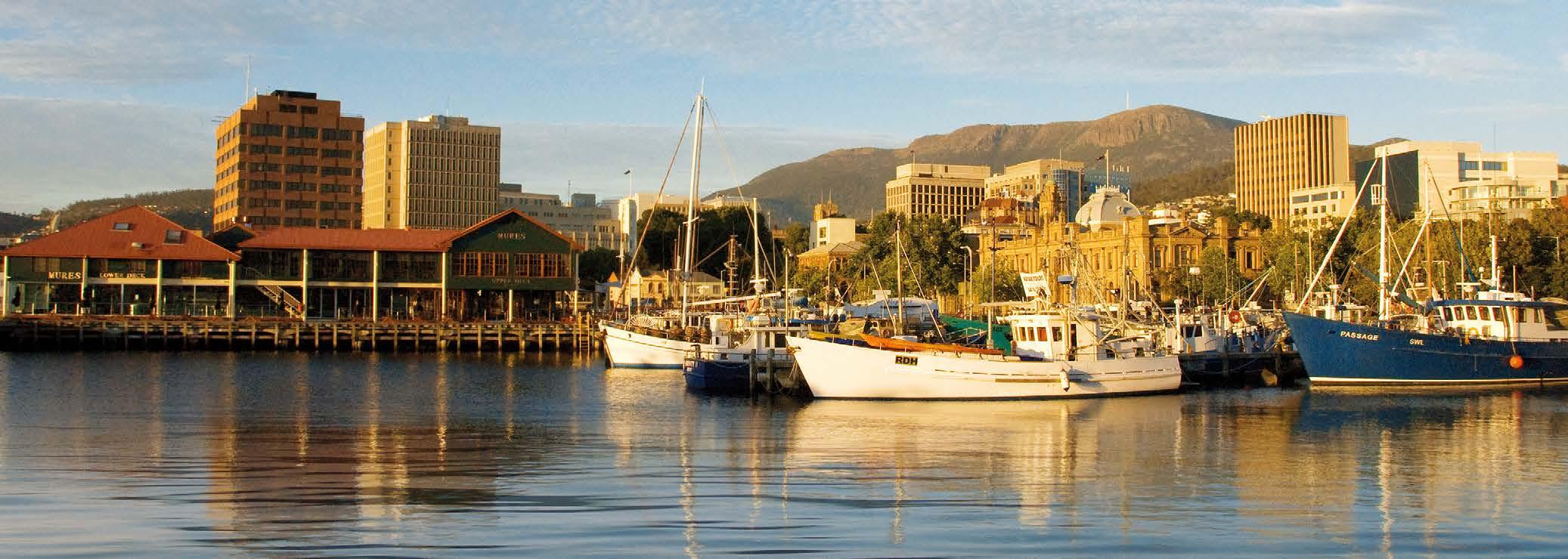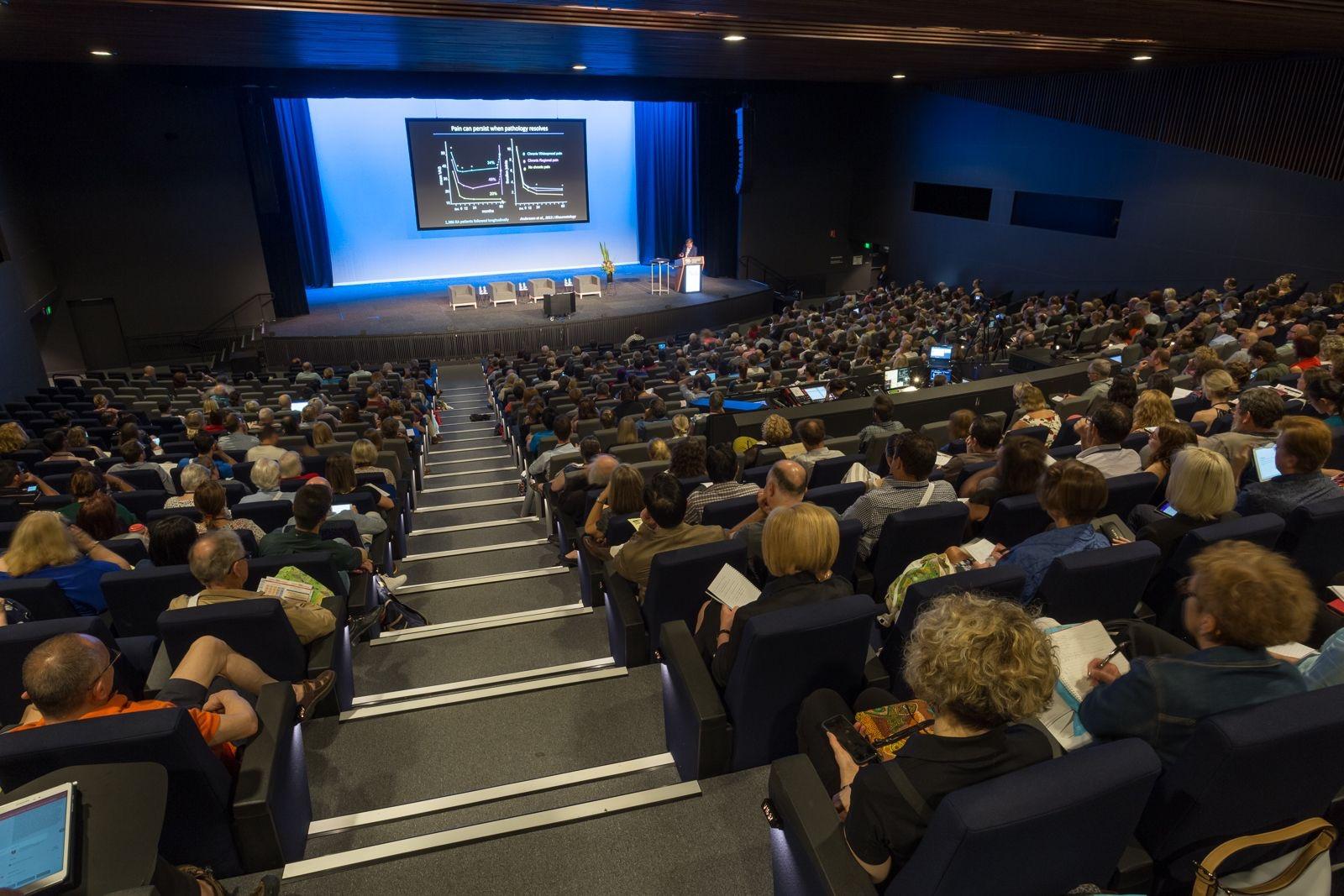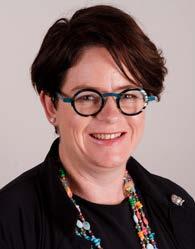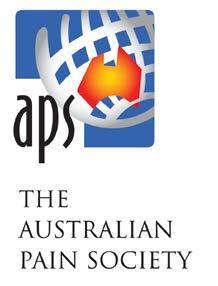Australian Pain Society NEWSLETTER






Hello all, and welcome to another edition of the Australian Pain Society eNewsletter. It’s great to be back for another year, especially after filling in as a guest editorial writer for the British Journal of Pain in their first edition of 2022. I would once again like to thank Felicia Cox for giving me the opportunity to contribute and for not yelling at me for citing a TikTok in their high-quality journal that has been running since 2007.
Momentum is starting to build for the 2022 Annual Scientific Meeting (ASM), which will be held in a face-to-face setting in Hobart in April. I know that I have really missed being able to connect and network with friends and colleagues I have made during the time I have been involved in the Society and would encourage as many of you as possible to make the trip down and attend. However, I acknowledge that it will not be as simple to snap back to the way things were before the COVID-19 pandemic and understand there may be new and different barriers to overcome to facilitate this. I never would have thought I would need so many approvals to travel to Tasmania!
The eNewsletter features three fantastic recent publications from members, including a systematic review and meta-analysis of targeting neurotrophic factors for low back pain and sciatica. This paper features several Society members, including Rodrigo Rizzo, Aidan Cashin and Hayley Leake. In recent years many of the clinical guidelines for low back pain have moved away from recommending pharmacological interventions due to safety and efficacy concerns. As a result, there has been a push towards finding novel analgesic actions targeting different mechanisms that can be used in the management of low back pain. Anti-nerve growth factor (antiNGF) is one of the potential novel mechanisms that has been identified, but little is known about the efficacy and safety of these medications for low back pain. I won’t steal anyone’s thunder and spoil the findings for you but certainly recommend checking the paper out. Congratulations to all involved for such a high quality output.
Finally, many of you will hopefully have seen that Season Two of One Thing launched in late February. All nine new episodes featuring speakers such as Professor Chris Eccleston and Professor Kathleen Sluka are available in video and podcast format. We will be promoting one episode per week on all our socials in the lead up to the ASM. I know the whole One Thing team is very thankful to Trudy, the Board, and the rest of the Society for supporting Season Two of our initiative.
See you all in Hobart!
LincolnWelcome to my latest President’s report.
We are all looking forward to our first face-to-face Annual Scientific Meeting (ASM) since 2019 and Tassie is a beautiful place to catch up with old friends and colleagues, meet new ones, and hear from a cracking group of international and national speakers. As always, the Scientific Program and Local Organising Committees and Alex from DCC&A have done a fantastic job in preparing for this ASM. We will be adhering to all Tasmanian Government and Health Department requirements and COVID precautions and remind all registrants and prospective registrants to check the Tasmanian Government webpage in addition to your own state governments’ webpage regarding interstate travel and COVID precautions.
As you are no doubt aware, the IASP 2022 Global Year theme is ‘Translating Pain Knowledge to Practice’. The aim of this campaign, per IASP President Claudia Sommer, is to increase the awareness of clinicians, scientists, and the public of our accumulating pain knowledge and how this may be of benefit to those living with pain. Keep an eye on the IASP website for fact sheets and other educational materials throughout the year.

The Society is excited to report that the Pain in Residential Aged Care Facilities: Management Strategies 2nd Edition has now been published and is now available as an eBook. The process of converting a textbook is not a simple process of cutting and pasting the document into a new file format. Our sincere thanks and gratitude go to our Executive Officer, Tracy Hallen, who put a great deal of blood, sweat and, dare I say, the odd tear into getting this valuable reference into an eBook format. You can purchase your copy here
Don’t forget that we are proceeding with our plans to hold the painSTAR school in November this year. Whilst we had planned to have this inaugural school two years ago, it will be particularly significant to be holding a pain school for translation and research during the IASP Global Year of the same theme. Please watch the newsletter and website for calls for applications and further information.
Finally, it gives me great pleasure to offer congratulations to Dr Kevin Keay, Chair of our Scientific Program Committee (SPC), for his full Professorship of Neuroscience and as Chief Anatomist, Faculty of Medicine and Health, University of Sydney, and congratulations are also in order for another member of our SPC & Chair of the Basic Pain Research Special Interest Group, Dr Jason Ivanusic, Department of Anatomy & Physiology, University of Melbourne for his full Professorship. Special mentions must also go to Emeritus Professor Laurie Mather on his award of the Order of Australia Medal for significant services to anaesthesia and pain management as a research scientist and educator and to Dr Aidan Cashin for receiving the IASP Ronald Dubner Research Prize, recognising the best clinical or basic Science Research paper, series of papers, or doctoral thesis in the field of pain whilst as a student, intern, resident, or pre/post-doctoral fellow.
That’s all for now – stay well, look out for each other, and I look forward to seeing you in Hobart
TrudyHave you secured your place at Australia’s only multidisciplinary pain conference? The conference offers insights into the complex nature of pain management from a variety of medical, nursing, and allied health perspectives.
Don’t miss out on your opportunity to join us this April in Hobart.
To register please click here
Regular - From 1 March 2022
Non-Member Registration Price vs Becoming an APS Member
$1,255 or Being a member saves you up to $285 after membership fees!
APS Student Member Registration Price Only $330 Being a member saves you $860 after membership fees!
Tell your colleagues who are interested in attending APS 2022 so they can save on their registration too!
Become an APS Member here
Should you have any queries about the conference, please contact the Conference Secretariat
We look forward to welcoming you – finally – to Hobart, Tasmania!

We are only four weeks away and are so excited to be meeting face to face again!
The Australian Pain Society 42nd Annual Scientific Meeting will be held from 10-13 April 2022 at the Hotel Grand Chancellor Hobart, Tasmania.
Review the full program here: Program Overview
Here are just a few things we are looking forward to:
Professor Andrew Rice
Monday 11 April, 3.45pm – 4.20pm
Cannabinoid Analgesia: What is the Evidence for Benefit and Harm?
Tuesday 12 April, 04.10pm – 04.45pm
Update on diagnosis and clinical assessment of patient with neuropathic pain
Professor Beverly Thorn
Monday 11 April, 09.25am – 10.00am
Cognitive-Behavioural Approaches for the Hard to Reach patient with Pain: Issues of Education, Literacy, and Disparity
Tuesday 12 April, 09.00am – 09.25am
Sunderland Lecture - Helping Patients Use the Brain as an Ally in Chronic Pain Self-Management
Is Medicinal Cannabis the next opioid crisis? Perspectives on pain, people and policy
Monday 11 April 2022, 4.30pm - 5.15pm
Medicinal cannabis is a hotly debated topic, often argued by passionate voices with firmly held beliefs. But what does the evidence really say about this product in the pain sector? And what are the political and consumer implications of this debate? This session invites you to join a lively expert panel discussion exploring all sides of medicinal cannabis including the good, the bad, the political, and the consumer perspective.
Sunday 10 April 2022
The APS’s Pre-Conference Workshop Day provides delegates with a flexible approach when it comes to choosing what they attend. All workshops are offered as half days, giving delegates the opportunity to personalise their own learning.
Customise your conference experience by attending the Acute Pain Workshop in the morning, before heading over to the Pharmacology in Pain Management afternoon session.
APS Members who attend the conference are rewarded with more competitive workshop registration fees, so start planning your week in Hobart today by becoming an APS Member
Pick the Brain of a Pain Researcher!
Monday 11 April 2022, 5.30pm – 6.30pm
This session will focus on research careerdevelopment for junior researchers and clinicians wanting to understand how to build on their research strengths to establish their research careers. Topics of discussion include publishing, getting project and fellowship funding, and doing research with impact.
Don’t miss out, register today!
For further information please visit the conference website.
Network, socialise, relax, enjoy!
There’s an exciting social program available to delegates with multiple opportunities to meet and connect with peers and build upon professional networks.
Sunday 10 April
Welcome Reception at the Exhibition Hall, Hotel Grand Chancellor
From 6.00 – 7.30pm
Join us for a first look at the exhibition hall and a chance to catch up with colleagues and delegates you haven’t seen since 2019!
Basic Pain Research & Pain in Childhood SIG Dinners at Old Wharf Restaurant
From 7.30pm
Enjoy dinner and drinks with friends and colleagues interested in Basic Pain Research and Pain in Childhood. Delegates don’t have to be a member of the SIGs to join, everyone is welcome.
Monday 11 April
Social Activity at Post Street Social, 11 – 13 Franklin Wharf
From 5.30pm
Enjoy a complimentary beer or wine at the end of the first day of conference. Stay on and share a meal with your colleagues or new friends.
Guided Parliament House Tour at 1 Salamanca Pl, Hobart
From 6.00 – 7.00pm
Interested delegates are welcome to join the Hon. Michael Gaffney, MLC, for a personalised, guided tour of Parliament House. The Hon. Michael Gaffney has been an Independent member of the Tasmanian Legislative Council since 2009, representing the seat of Mersey.
Tuesday 12 April
Gala Dinner at Glen Albyn Estate
From 7.00 – 11.00pm
Only 20 minutes’ from Hobart, join us at one of Tasmania’s most unique and beautiful venues – Glen Albyn Estate. Revel in a backdrop of water-bound lush Tasmanian bush land while you indulge in three courses of delicious local flavours and wines.
For full details on the APS 2022 social program, visit the conference website
Secure your place at these enjoyable and entertaining social functions by registering today!
Should you have any queries about the conference, please contact the Conference Secretariat
Translating pain knowledge to acute pain practice across disciplines
Join us in this broad-based workshop to suit all knowledge levels and a variety of specialist areas with a multi-disciplinary focus in the field of Acute Pain Management. The aim is to share information, evidence, and our experiences with a focus on a pragmatic approach to optimise our practice. Issues pertinent to today’s challenges will be presented with opportunities to discuss and propose solutions to our greatest problems. It will help update our core knowledge, as well as find ways to move forward in this constantly challenging and vital area of medical care.
When: Sunday 10 April 2022, 8.30 am – 5.00 pm
Where: Hotel Grand Chancellor, Hobart
Cost: Start from $180 (Full Day) per person
To register or for further information please visit the Conference Website
The Fundamentals of Pain pre-conference workshop is a succinct overview of the physiology, clinical assessment, and clinical management of pain. The workshop is aimed at the general practitioner, specialist, allied health clinician, or psychologist looking for an introduction to, or update on, persistent pain management.
This workshop is grounded in a biopsychosocial understanding of pain mechanisms and developing a mechanism-based approach to pain assessment and management.
This workshop will compliment those with an interest in attending an afternoon session of pharmacology, acute pain, or Physiotherapy topics.
When: Sunday 10 April 2022, 8.30 am – 12.30 pm
Where: Hotel Grand Chancellor, Hobart
Cost: Start from $130 per person
To register or for further information please visit the Conference Website
Inter-disciplinary pain management has been the “gold standard” approach for decades. When it works, it is tremendous! But, there are many challenges applying this in practice. From interpersonal difficulties to systemic regulations, achieving strong communication and a united team approach can be hard to achieve.
This workshop will look at the benefits and challenges of inter-disciplinary pain management. Attendees will leave this workshop stimulated as to how they could improve this care in their own work setting.
When: Sunday 10 April 2022, 1.30 pm – 5.00 pm
Where: Hotel Grand Chancellor, Hobart
Cost: Start from $130 per person
To register or for further information please visit the Conference Website

This workshop will showcase the latest in Australian basic pain research from early career and senior researchers, and provide a forum to discuss mechanisms of nociception and pain across all levels of investigation: from molecular and cellular analyses, to studies in animals and humans (pre-clinical or clinical).
This workshop is open to all interested in mechanisms of nociception and pain including basic and clinical researchers, health professionals, and students at all levels.
When: Sunday 10 April 2022, 8.30 am – 12.30 pm
Where: Hotel Grand Chancellor, Hobart
Cost: Start from $130 per person
To register or for further information please visit the Conference Website.
Translating current evidence in the management of nociplastic pain conditions into clinical practice
The intended audience includes GPs, Pharmacists, Specialists, and other Allied Health professionals with interest in pharmacology and its application in persistent pain within the clinical setting.
In line with the IASP Global Year of translating knowledge into practice, this interactive workshop will focus on the evidence-based learnings of nociplastic pain conditions. It will explore, pharmacological, complementary medicines, and
the possible correlations of the gut microbiome in chronic pain conditions. We’ll also explore the evidence of placebo response and techniques and its influential role in each of our interactions with patients having a magnifying (or inhibiting) the powerful medication we dispense.
The workshop will include a case study for practical application of principles that will be addressed by the various expert speakers. There will be opportunities for questions and networking with peers, so that current evidence-based knowledge can be optimised and translated in everyday practice.
When: Sunday 10 April 2022, 1.30 pm – 5.00 pm
Where: Hotel Grand Chancellor, Hobart
Cost: Start from $130 per person
To register or for further information please visit the Conference Website
Have you ever wanted to ask a well-known researcher –“How did you know this was for you?”
“How did you know what opportunities to say yes to and what to say no to?”
If you have wanted to ask, now is your chance!
This session is for early career researchers, and includes networking opportunities with a number of the plenary speakers including:

> Dr Christine Barry, Flinders University, SA
> Professor Steve Kamper, University of Sydney, NSW
> A/Professor Suzanne Nielsen, Monash Addiction Research Centre, VIC
> Professor Andrew Rice, Imperial College London, United Kingdom
Date: Monday 11 April 2022
Time: 5:30pm - 6:30pm
Cost: $10 per person, includes a drink on arrival
When registering for the conference, don’t forget to add in a ticket to the Trainee Session! To register click here
Did you miss any live sessions from the last APS Conference and webinar series?
Or do you just want to re-watch your favorite sessions?
On demand recordings are still available in the APS 2021 Portal.
Take this opportunity to access all session recordings and poster presentations as they will only be available until April 2022.
For any assistance in accessing the portal or other information please contact APS Conference Secretariat.
The 2022 Australian Pain Society Annual General Meeting will be held on Wednesday 13th April 2022 from 7:30 – 8:45am AEST at the Annual Scientific Meeting at the Hotel Grand Chancellor, Hobart, TAS.

A call for nominations for the role of Director for Victoria has been sent. All nominations are due by 5pm AEDT Friday 11 March 2022.
A formal Notice of the AGM along with the 2022 Agenda, Proxy form and documents, and Minutes from the 2021 AGM and GBM will be distributed before the end of March 2022.
The 2022 Basic Pain Research Special Interest Group (BPR SIG) Annual General Meeting will be held on Sunday 10th April 2022 from 12:30-1pm AEST, immediately after the BPR SIG Pre-Conference Workshop.
We hope to see our members there!



The gold standard in Pain Management for Older People is now available in eBook format!

In this edition:
Chapter 1: About Pain
Chapter 2: Identi cation and assessment of pain in aged care residents

Chapter 3: Beyond medication: psychological and educational approaches to pain management
Chapter 4: Movement and physical activity
Chapter 5: Complementary approaches to pain
Chapter 6: Pharmacological treatments
Chapter 7: Dementia and cognitive impairment: special considerations

Chapter 8: Pain at the end of life
Chapter 9: Pain and nutrition
Chapter 10: Quality and systems issues
Thank you to APS members Amelia Mardon, Hayley Leake, Thomas Astil, Lorimer Moseley, and Jane Chalmers, and their colleagues Kimberly Szeto, and Sandra Hilton for sharing the following recent publication.
Article first published online: 17 December 2021
Journal: Mardon, A. K., Leake, H. B., Szeto, K., Astill, T., Hilton, S., Moseley, G. L., & Chalmers, K. J. (2021). Treatment recommendations for the management of persistent pelvic pain: A systematic review of international clinical practice guidelines. BJOG: An International Journal of Obstetrics & Gynaecology.
DOI: https://doi.org/10.1016/j.nbd.2021.105528
Link: https://obgyn.onlinelibrary.wiley.com/ doi/abs/10.1111/1471-0528.17064?casa_ token=s4wSYr_5ZLgAAAAA:el76owYiMuebv_ fUr-k_hsCmX4BltPzcwh5HiJis_ a9VP22OcTzGxEscc194FJX7GEFGNTA1Kl_4H-k
Introduction
Females with persistent pelvic pain (PPP) report variability in recommended treatments despite the availability of clinical practice guidelines (CPGs) that aim to standardise care. There is a lack of a clear consensus for the best practice care for PPP. The objective of this study was to identify and summarise treatment recommendations across CPGs for the management of PPP, and appraise their quality.
Electronic databases, including MEDLINE, CENTRAL, EMBASE, EmCare, SCOPUS, the Cochrane Database of Systematic Reviews, Web of Science Core Collection, and relevant guideline databases were searched from their inception to June 2021. Included CPGs were those for the management of urogynaecological conditions in adult females associated with PPP, published in English, of any publication date, and endorsed by a professional organisation or society. We screened 1379 records and included 20 CPGs for seven conditions. CPG quality was assessed using The Appraisal of Guidelines for Research and Evaluation II (AGREE-II) tool. Descriptive synthesis compiled treatment recommendations across CPGs.
The CPGs provided 270 individual recommendations for 90 interventions. For quality appraisal, guidelines on average scored ‘excellent’ for the domains ‘scope and purpose’ (80.6%, SD = 13.3) and ‘clarity and presentation’ (74.4%, SD = 12.0); for other domains, average scores were satisfactory or poor. Four guidelines (endometriosis: NICE,
RANZCOG and ESHRE; polycystic ovary syndrome: Teede et al. 2018, International Evidence Based Guideline for the Assessment and Management of Polycystic Ovary Syndrome, Monash University, Melbourne, Australia) were deemed recommended for use. Treatment recommendations were most frequent for pharmaceutical and surgical interventions. Most recommendations for psychological were vague and ambiguous. Recommendations were variable Physiotherapy and other conservative interventions.
The quality of CPGs for PPP is generally poor. Several CPGs endorse the consideration of biopsychosocial elements of PPP. Yet most recommend pharmaceutical, surgical, and other biomedical interventions.
We propose several gaps in the translational pipeline from research to clinical practice for the optimal management of PPP: 1) a lack of high-quality empirical evidence, in particular for psychosocial interventions; 2) poor quality CPGs and minimal involvement of consumer voices in their development; 3) minimal recommendations a multidisciplinary management approach; 4) poor applicability of PPP CPGs in clinical practice.
Declaration
AKM, KS, and HBL are supported by the Research Training Programme domestic (RTPd) Stipend as postgraduate students at the University of South Australia. TA is supported by the Research Training Programme domestic (RTPd) Stipend as a postgraduate student at the Western Sydney University. GLM, KJC, and KS are supported by a Leadership Investigator grant to GLM from the National Health & Medical Research Council of Australia (ID 1178444). GLM has received support from: Australian Medical Research Future Fund, Australian NHMRC, AIA Australia, SwissRe, Return to Work SA, International Association for the Study of Pain, ConnectHealth UK, Port Adelaide Football Club, Melbourne Football Club, Arsenal Football Club, and various sporting leagues throughout Europe and USA. Professional and scientific bodies have reimbursed him for travel costs related to presentation of research on pain at scientific conferences/ symposia. He has received speaker fees for lectures on pain and rehabilitation. He receives book royalties from NOIgroup publications, and Dancing Giraffe Press for books on pain and rehabilitation. He is the current Director of Painaustralia. KJC has received support from The Hospital Research Foundation and the Australian Health Research Alliance. She has received payment for presentations given on pelvic health. SH has received book royalties from OPTP. She has received payment for presentations given on pelvic pain. All other authors report no conflicts to disclose.
Thank you to APS members Michael Morgan, Vida Nazemian, Jason Ivanusic and their colleagues Jenny Thai and Richard Song for sharing the following recent publication.
Article first published online: 3rd June 2021
Journal Reference: Pain. 2022 Feb 1;163(2):390-402.
DOI: 10.1097/j.pain.0000000000002355
Link: https://journals.lww.com/pain/ Fulltext/2022/02000/Changes_to_the_activity_ and_sensitivity_of_nerves.14.aspx
Introduction
Whilst it is clear that osteoarthritis (OA) pain involves activation and/or sensitisation of nociceptors that innervate knee joint articular tissues, much less is known about the role of the innervation of surrounding bone. In this study, we used an animal model of mono-iodoacetate (MIA)-induced OA to test the idea that pain in OA is driven by differential contributions from nerves that innervate knee joint articular tissues vs the surrounding bone.
OA was induced by injection of MIA into the left hind knee joint of male rats. Control animals received injections of saline into the left hind knee joint. The time-course of pain behaviour (reduction in weight bearing) was assayed using the advanced dynamic weight bearing device. Histopathological changes in the knee joint and surrounding bones were assessed using Haematoxylin and Eosin at days 3 and 28 after injection of MIA or saline. In vivo, extracellular electrophysiological recordings were made for both knee joint and bone afferent neurons, at each of these timepoints, to determine if their function was altered in osteoarthritic (MIA-injected) relative to control (saline-injected) animals.
There was a rapid decrease in weight bearing on the injected limb of MIA-injected animals, but not saline-injected animals, that was established by day 1, peaked at days 2 and 3 (early MIA-induced OA), and persisted to at least day 28 (late MIAinduced OA). We observed MIA-induced changes in the function of knee joint afferent neurons, but not bone afferent neurons, at day 3 when there was histological evidence of inflammation in the joint capsule, but no damage to the articular cartilage or subchondral bone. Changes in the function of bone afferent neurons were only observed at day 28, when there was additional histological evidence of damage to the articular cartilage and surrounding subchondral bone.
This study shows that pain early in MIA-induced OA involves altered function of nerves that innervate the joint capsule but not the underlying subchondral bone, and that pain in late MIAinduced OA involves an additional and altered function of nerves that innervate the subchondral bone. Our new finding that pain in late MIAinduced OA is associated with changes to the function of nerves that innervate subchondral bone suggests they are likely to be important targets for development of mechanism-based therapies to treat pain late in disease progression.
Nerves that innervate bone should be considered important targets for development of mechanismbased therapies to treat pain in late OA.
Declaration
This work was supported by funding from the National Health and Medical Research Council (NHMRC; #1185981).
subchondral bone contribute to pain in late-stage osteoarthritis
Thank you to APS members Rodrigo Rizzo, Michael Ferraro, Michael Wewege, Aidan Cashin, Hayley Leake, Edel O’Hagan, Matthew Jones and their colleagues, Sylvia Gustin, Andrew McLachlan, Richard Day and James McAuley for sharing the following recent publication.
Article first published online: 13/02/2022
Journal Reference: Rheumatology
DOI: https://doi.org/10.1093/rheumatology/ keab785
Link: https://academic.oup.com/rheumatology/ advance-article/doi/10.1093/rheumatology/ keab785/6408457?login=true
Abstract
Objective
This meta-analysis aims to investigate the efficacy and safety of medicines that target neurotrophic factors for low back pain (LBP) or sciatica.
Methods
We searched published and trial registry reports of randomized controlled trials evaluating the effect of medicines that target neurotrophic factors to LBP or sciatica in seven databases from inception to December 2020. Two reviewers independently identified studies, extracted data, and assessed the risk of bias and certainty in the evidence.
Results
Nine studies (3370 participants) were included in the meta-analyses. Low certainty evidence showed that anti-nerve growth factor (NGF) may reduce pain at 4
weeks (mean difference [MD] -6.75, 95% CI: -8.61, -4.90) and 12 weeks (MD -6.16, 95% CI: -8.38, -3.94), and may increase adverse effects for chronic LBP (odds ratio [OR] 1.18, 95% CI: 1.01, 1.38). Higher doses of anti-NGF may offer a clinically important reduction in pain at the cost of increased adverse effects for chronic LBP. Very low certainty evidence showed that anti-NGF and glial cell line-derived neurotrophic factor (pro-GDNF) may not reduce pain for sciatica at 4 weeks (MD -1.40, 95% CI: -8.26, 5.46), at 12 weeks (MD -2.91, 95% CI: -13.69, 7.67) and may increase adverse effects for sciatica (OR 3.27, 95% CI: 1.78, 6.00).
Anti-NGF may offer small reductions in pain intensity for chronic LBP. The effect may depend on the dose and types of medicines. For sciatica, anti-NGF or pro-GDNF may not reduce pain. Medicines that target neurotrophic factors for LBP or sciatica are associated with different adverse effects compared to those observed in commonly prescribed medicines for these conditions.
Anti-NGF was considered the most promising medicine for low back pain, and it has been in the most advanced clinical trial phase towards commercialization. We showed that the overall analgesic effect for chronic low back pain is small, and not clinically meaningful. Although anti-NGF medicines seem to not be associated with the common adverse effects of opioids (addiction, misuse, and dependence), anti-NGF is associated with other adverse effects such as rapid progression of osteoarthrosis and sensory abnormalities. We encourage researchers to conduct high-quality systematic reviews of medicines that are soon to be submitted for approval to increase transparency in the regulatory process of medicines for a particular condition.
The authors have declared no conflicts of interest.
The Australian Pain Society (APS) is keen to share publications from our members with their colleagues via our eNewsletter. If you’ve had an article accepted or published recently, please contact our Assistant Editor Joanne Harmon via the APS Secretariat (aps@apsoc.org.au) with the title, authors, and reference (i.e., journal, volume, and DOI) of your article and request the submission template. We would love it if you also supply a short commentary (300 words max) to give our readers the gist of the article.

The APS Board will be calling for applications for PhD Scholarships soon! Get your thoughts and paperwork together now!!
Following the success of their initial season in 2021, One Thing is back for Season Two. The bigger and better One Thing team (Dr Joshua Pate, Dr David Kennedy, Dr Lincoln Tracy, Miss Hayley Leake, Dr Aidan Cashin, and Dr Daniel Harvey) have interviewed nine new speakers (made up of clinicians, researchers, and people living with pain) this season to find out the one thing they want people challenged by pain to know. Some of the guests featured in Season Two include Pete Moore (creator and author of the Pain Toolkit), Professor Kathleen Sluka (University of Iowa), and Professor Christopher Eccleston (University of Bath). It all kicked off on February 18!!
Keep an eye out on our website and social media for more information. You can find us at onething.painsci.org.
Season Two of One Thing is powered by the Australian Pain Society

The Faculty of Pain Medicine (FPM) has generously extended to all APS members a purchase discount of 20% for the “Better Pain Management” modules and courses.
Purchase any quantity of Better Pain Management modules or courses in ONE transaction and receive the 20% APS member discount on the entire transaction (no further discounts apply).
This discount gives you the flexibility to “Pick ‘n’ Mix” your preferred topics for self-directed and self-paced e-learning.
The 20% discount can be applied to:
• Any single module purchases
• Three-module pre-packaged courses or ‘select your own’ three module pack
• Six-module pre-packaged courses or ‘select your own’ six module pack
• 12-module complete BPM course
To enrol in any course and take advantage of this discount, please Contact BPM and nominate your module or course selections. BPM will provide a unique APS voucher code for the 20% APS member discount on your purchase.










> NPS MedicineWise Pain Management Hub for Consumers: https://www.nps.org.au/painmanagement-hub/consumers
> Latest opioid data from the Australian Bureau of Statistics: Opioid induced deaths in Australia. https:// www.abs.gov.au/articles/opioid-induced-deathsaustralia
> Australia’s annual overdose report 2019 from the Pennington institute : http://www.penington.org.au/ australias-annual-overdose-report-2019/
> The Third Australian Atlas of Healthcare Variation: This series explores how healthcare use in Australia varies depending on where people live. It investigates reasons for variation that may be unwarranted, and provides specific achievable actions to reduce unwarranted variation.
https://www.safetyandquality.gov.au/atlas
> Painaustralia eNewsletter latest issue, available online at http://www.painaustralia.org.au/media/enews
> ePPOC: electronic Persistent Pain Outcomes Collaboration: The electronic Persistent Pain Outcomes Collaboration (ePPOC) is an Australasian initiative that aims to improve the quality of care and outcomes for people who experience chronic pain. For more information about ePPOC, refer to the website: http://ahsri.uow.edu.au/eppoc/index.html
> PainHEALTH website: painHEALTH‘s aim is to help health consumers with musculoskeletal pain access reliable, evidence-based information and tips to assist in the comanagement of musculoskeletal pain. painHEALTH is an initiative of the Department of Health, Western Australia. http://painhealth.csse.uwa.edu.au/
> Stanford University: CHOIR Collaborative Health Outcomes Information Registry https://choir.stanford. edu/
> Opioid Podcasts for GPs: These podcasts are produced by David Outridge GP, and FAChAM Trainee as a project under the auspices of Dr Steven Kelly Staff Specialist in Addiction Medicine, Kullaroo Clinic Gosford. A 20 week series from the Hunter Postgraduate Medical Institute (University of Newcastle) : http://www.gptraining.com.au/recentpodcasts
> Airing Pain: Pain resources via an online radio show produced by Pain Concern, a UK registered Charity: http://painconcern.org.uk/airing-pain/
> Digital Health Guide: Developed by Primary Health Network Tasmania, check out the pain resources by accessing the link https://digitalhealthguide.com.au/ Account/LogOn?ReturnUrl=%2fSpecialtyFormulary%2f2 At login, Username: connectingcare, Password: health
> Indigenous Resources: New webpage on the APS website aggregating Indigenous resources: https:// www.apsoc.org.au/Indigenous-Resources
> Choosing Wisely Australia – News & media: https:// www.choosingwisely.org.au/news-events/mediareleases/choosing-wisely-resource-addresses-patientopioid-knowledge-gap
> Over the counter codeine – changes to supply: https:// www.nps.org.au/medical-info/clinical-topics/over-thecounter-codeine-changes-to-supply
> Medicines with codeine – what you need to know: https://www.nps.org.au/medical-info/consumer-info/ medicines-with-codeine-what-you-need-to-know
> Information about opioids and chronic non-cancer pain: U-tube clip (5.39mins) https://www.youtube.com/ watch?v=8R4RT0pUCf4&feature=share&fbclid=IwAR2db hzgEAcc7B-ogq2a6Xhud5FDkbciPbdJ9pb94GnQI6pAeifG d1VP-_I
> Opioids: Communications videos: https://www.nps.org. au/opioids-communication-videos
> Codeine information hub: https://www.tga.gov.au/ codeine-info-hub
resources:
> Brainman and Pain Tool Kit translations, SEP15: http://www.aci.health.nsw.gov.au/chronic-pain/ translated-resources
> Pain Management Resources: http://www.aci.health. nsw.gov.au/resources/pain-management
> Quicksteps to Manage Chronic Pain in Primary Care: http://www.aci.health.nsw.gov.au/chronic-pain/healthprofessionals/quick-steps-to-manage-chronic-pain-inprimary-care
Staff Specialist – Persistent Pain Service
Department of Health, Royal Hobart Hospital
Job Reference: 517734
Employment Status: Permanent full time and part time day work, working various hours up to 76 hours per fortnight commencing as soon as possible.
Hours per week: Minimum 0.5 EFT
Contact: Professor Michael Ashby
Applications Close: 11 May 2022
The Department of Health is seeking interest from suitably qualified applicants for a Staff Specialist –Persistent Pain Service (517734) vacancy at Royal Hobart Hospital. We are looking for a suitably experienced Pain Medicine specialist who would be eligible for an initial appointment as Clinical Director (HOD) of the service for two years, renewable by mutual agreement.
> Built into Quicksteps: “How to de-prescribe and wean opioids in general practice”: http://www. aci.health.nsw.gov.au/chronic-pain/healthprofessionals/quick-steps-to-manage-chronicpain-in-primary-care/how_to_de-prescribe_and_ wean_opioids_in_general_practice
> A list of helpful apps for consumers and clinicians now available at: http://www.aci.health.nsw.gov.au/ chronic-pain/health-professionals/management-ofchronic-pain
> Chronic Pain in the ED: https://www.aci.health.nsw. gov.au/networks/eci/clinical/clinical-resources/ clinical-tools/pain-management/chronic-pain-in-theed
For more information contact:
Bruce Edwards
Nursing Director – Cancer, Chronic Disease, SubAcute Care

Phone: (03) 6166 8200
Email: bruce.edwards@ths.tas.gov.au
Professor Michael Ashby
Clinical Director - Cancer, Chronic Disease and Sub Acute Care
Phone: 0408 998 744
Email: michael.ashby@ths.tas.gov.au
Dr Helen E Harris
Deputy Director of Executive Director of Medical Services (South)
Phone: 0419 666 620
Email: helen.harris@ths.tas.gov.au
Thank you for your continued support and membership of the APS!
Please note:
1. We understand that circumstances change, so each year we ask you to select your appropriate level of membership.
2. This system of self-reporting subscription levels was implemented in 2009 for the benefit and fairness of all members.
Regular A $110
Regular B $205
Regular C $310
Retired $65 Concessional Rate
Student $65 Concessional Rate
Before renewing, please ensure you review and update your member profile online. Payments can be made by Credit Card, BPAY, or Cheque.
Did you know that the Australian Pain Society is a registered charity with ACNC? Your donation will help the Society to promote the prevention and control of diseases in human beings associated with pain.
All donations of $2 or more to APS are tax-deductible.
Dr Felix Aplin Science Research
Dr Neda Assareh Science Research
Dr Kylie Bailey Psychology
Mr Anthony Berrick Psychology
Ms Ingrid Bindicsova Psychology
Mr Dwain Buffett Physiotherapy
Ms Jessica Bulluss Science Research
Miss Jennaya Christensen Science Research
Ms Angie Clerc-Hawke Education
Mr Craig Crawley Physiotherapy
Ms Jodie Dagger Nursing
Dr Gaelle Marie Emvalomenos Science Research
Prof Graham Galloway Radiology
Dr Ali Gholamrezaei Science Research
Mrs Rosemary Gospel Occupational Therapy
Dr Stephanie Harris Anaesthesia
Dr Riajul Hasan Pain Medicine Physician
Mrs Tessa Heine Occupational Therapy
Miss Caitlin Howlett Psychology
Dr Yena Hwang Anaesthesia
Dr Luxmana Jeganathan Anaesthesia
Dr Rhyon Johnson General Practice
Dr Matthew Jones Exercise Physiologist
Ms Margaret Jordan Pharmacy
Dr Maleeka Khullar Pain Medicine Physician
Miss Zoe Kodila Neurology
Miss Erika Kotowicz Physiotherapy
Dr Sachin Kulkarni Dentistry
Miss Gabrielle Laarhoven Physiotherapy
Mr Marco Lamonaca Pain Medicine Physician
Ms Shania Liu Pharmacy
Mr Luke McCarney Osteopathy
Ms Amy McNeilage Psychology
Mrs Rebecca Middlebrook Physiotherapy
Miss Summer Page Science Research
Ms Alison Peart Occupational Therapy
Ms Emily Peelgrane Occupational Therapy
Dr Nicola Pennell General Practice
Ms Margaret Phillips Nursing
Dr Melanie Plinsinga Oncology
Mr Johannes Pronk Physiotherapy
Miss Nicole Rickerby Psychology
Dr Pooria Sarrami Science Research
Ms Sarah Schwetlik Physiotherapy
Ms Marissa Sgro Science Research
A/Prof Peter Shortland Science Research
Mrs Carrie Taylor Physiotherapy
Ms Anna Vogelzang Exercise Physiologist
Miss Pauline Voon Nursing
Dr Candice Wallman Pain Medicine Physician
Mrs Lyndall Watkins Nursing
Dr Kal Yacoub General Practice
Dr Judy Zhu Science Research
24-27 March 2022
IASP Pain in Childhood SIG
ISPP 2022 13th International Symposium on Pediatric Pain: Diversity, Equity, Access Online, Virtual, Online Conference https://www.ispp2022.nz/website/17292/
24-26 March 2022
New Zealand Pain Society Annual Scientific Meeting All Hands on Deck
The Cordis Hotel, Auckland, New Zealand https://www.nzps2022.nz/website/24660/
26 March 2022
Pain Association of Singapore
PAS Annual Scientific Meeting 2022
Online, Virtual, Online Conference https://www.pain-asm.com/
31 March - 2 April 2022
Australian Physiotherapy Association Thrive Conference
Brisbane Convention and Exhibition Centre, QLD https://australian.physio/pd/conferences
10-13 April 2022
Australian Pain Society 42nd Annual Scientific Meeting
In the IASP Global Year for Translating Pain Knowledge to Practice
Hotel Grand Chancellor, Hobart, TAS https://www.dcconferences.com.au/aps2022/
27-30 April 2022
European Pain Federation
12th Congress of the European Pain Federation EFIC The Convention Centre Dublin, Dublin, Ireland
https://efic-congress.org/
20-22 May 2022
Australian Psychological Society College of Clinical Psychologists
Complexity in Practice - 2022 Annual Conference
Sofitel Brisbane Central, Brisbane, QLD https://www.psychology.org.au/APS-CCLIN-Conf/2021
17-18 May 2022
Australian Society of Rehabilitation Counsellors
ASORC Rehabilitation Counsellors Conference 2022 Online, Virtual, Online Conference https://www.asorc.org.au/events/event/ conference2022
27-29 May 2022
Spine Society of Australia 33rd Annual Scientific Meeting
SSA 2022
Darwin Convention Centre, Darwin, NT https://dcconferences.eventsair.com/ssa-2022/
30 May - 1 June 2022
National Rural Health Alliance 16th National Rural Health Conference
Bridging social distance; Rural health innovating & collaborating Perth Convention Centre, Perth, WA
https://www.ruralhealth.org.au/16nrhc/
7-10 June 2022
Rehabilitation Medicine Society of Australia and New Zealand (RMSANZ)
5th Annual Scientific Meeting: Forging Alliances, New Horizons
Gold Coast Convention and Exhibition Centre, QLD
https://www.dcconferences.com.au/rmsanz2022/
13-14 August 2022
2022 Neuromodulation Society of Australia and New Zealand (NSANZ 2022)
15th Annual Scientific Meeting - The Spine and Beyond: New Frontiers
Sofitel Melbourne on Collins, Melbourne, VIC
https://www.dcconferences.com.au/nsanz2022
14-17 September 2022
Wounds Australia
Wounds Australia 2022 “Time to Heal, Time to Unite, Time to Innovate”
ICC, Sydney, NSW
https://wounds2022.com.au/home
Vision:
All people will have optimal access to pain prevention and management throughout their life.
Mission:
The Australian Pain Society is a multidisciplinary association whose mission is to advance pain prevention, management and clinical practice.
Priorities:
In order to achieve our mission, the Australian Pain Society will provide:
> Membership
> Research
> Education
> Services and resources
> Good governance and operations
> Advocacy
President:
Ms Trudy Maunsell
Acute Pain Service
Princess Alexandra Hospital
Woolloongabba QLD 4102
Tel: 07 3176 5547 Fax: 07 3176 5102
President-Elect:
Mrs Joyce McSwan
Gold Coast Primary Health Network
Persistent Pain Program, QLD and PainWISE


Tel: 0412 327 795 Fax: 07 3539 9801
Secretary:
Mrs Dinah Spratt
Physiotas Physiotherapy
Shearwater TAS 7307
Tel: 03 6428 7500 Fax: 03 6424 7811
Treasurer
Mr Tim Austin
Camperdown Physiotherapy
Newtown NSW 2042
Tel: 02 9517 1787 Fax: 02 9516 2491
ACT Director:
Dr Andrew Watson


Calvary Hospital
Canberra ACT 2617
Tel: 02 6201 6352 Fax: N/A
NSW Director:
Dr Tim Ho

Inner West Pain Centre
RPA Medical Centre
Newtown NSW 2042
Tel: 02 9517 1764 Fax: 02 9517 1832
NT Director:
Dr Rav Harish
Alice Springs Hospital
Central Australian Health Service
Alice Springs NT 0871
Email: rav.harish@nt.gov.au

QLD Director:

Mrs Karalyn Huxhagen
KH Pharmacy Consulting
Mackay QLD 4740
Tel: 0418 185 972 Fax: 07 4805 6155
SA Director:
Dr Michelle Harris

Royal Adelaide Hospital and Lyell McEwin Hospital
Adelaide SA
Email: michelle.harris2@sa.gov.au
TAS Director:
Ms Bernadette Smith
Psychology Plus
South Burnie TAS
Tel: 03 6431 9959 Fax: 03 6431 9950
VIC Director:
Dr Laura Prendergast




Pain Service, Austin Health
Heidelberg VIC 3084
WA Director:
Ms Jacintha Bell
Lifeworks Occupational Therapy
Subiaco WA 6008
Tel: 0451 178 880 Fax: 08 6323 3329
Immediate Past President:
A/Prof Anne Burke
Central Adelaide Local Health Network
Royal Adelaide Hospital
Adelaide SA 5000
Tel: 08 7074 2835 Fax: 08 7074 6247
SPC Chair:
Prof Kevin Keay



Department of Anatomy
University of Sydney
Sydney NSW 2006
Tel: 02 9351 4132 Fax: 02 9351 2817
IASP Liaison:
Professor Michele Sterling



Recovery Injury Research Centre
University of Queensland
Herston QLD 4092
Tel: 07 3346 4793
Communications Coordinator:
Ms Trudy Maunsell
Acute Pain Service
Princess Alexandra Hospital
Woolloongabba QLD 4102
Tel: 07 3176 5547 Fax: 07 3176 5102
Newsletter Editor:
Dr Lincoln Tracy
School of Public Health and Preventive Medicine
Monash University
Melbourne VIC 3004
Tel: 03 9903 0288
Newsletter Assistant Editor:
Dr Joanne Harmon

School of Clinical and Health Sciences
University of South Australia
Adelaide SA 5000
Tel: 08 8302 1442
PhD Scholarship Chair:
Dr Michael Farrell
Retired
VIC Secretariat:
DC Conference & Association
Management Pty Ltd
PO Box 637
North Sydney, NSW 2059
Tel: 02 9016 4343
Email: aps@apsoc.org.au
Website: apsoc.org.au
